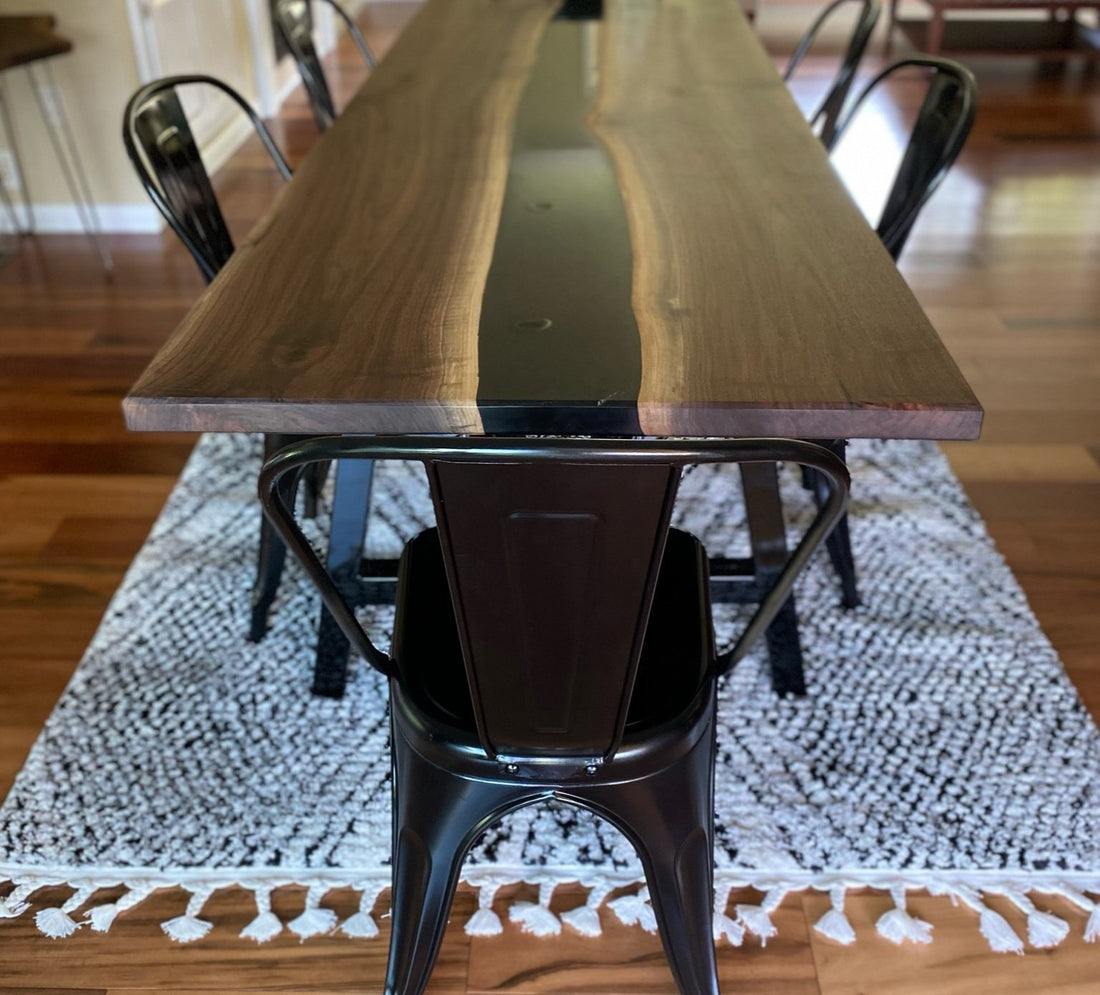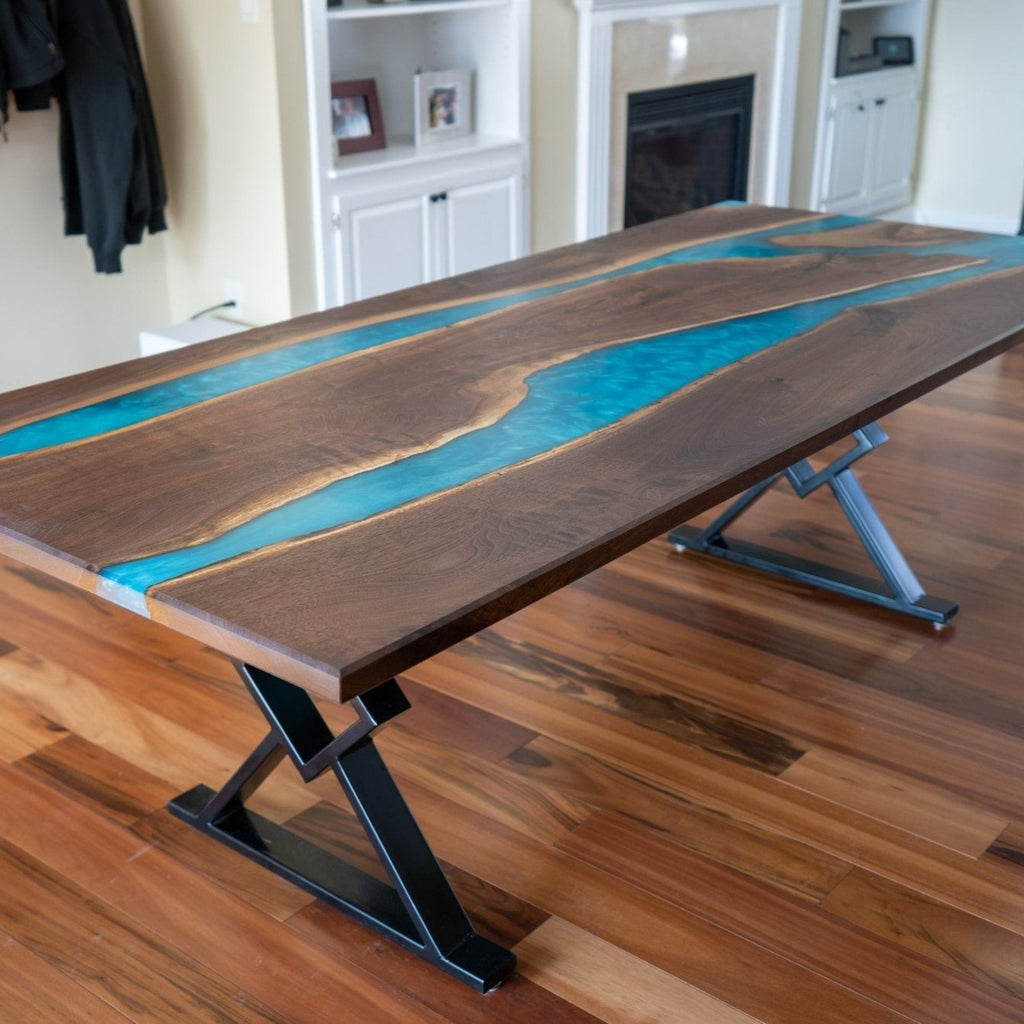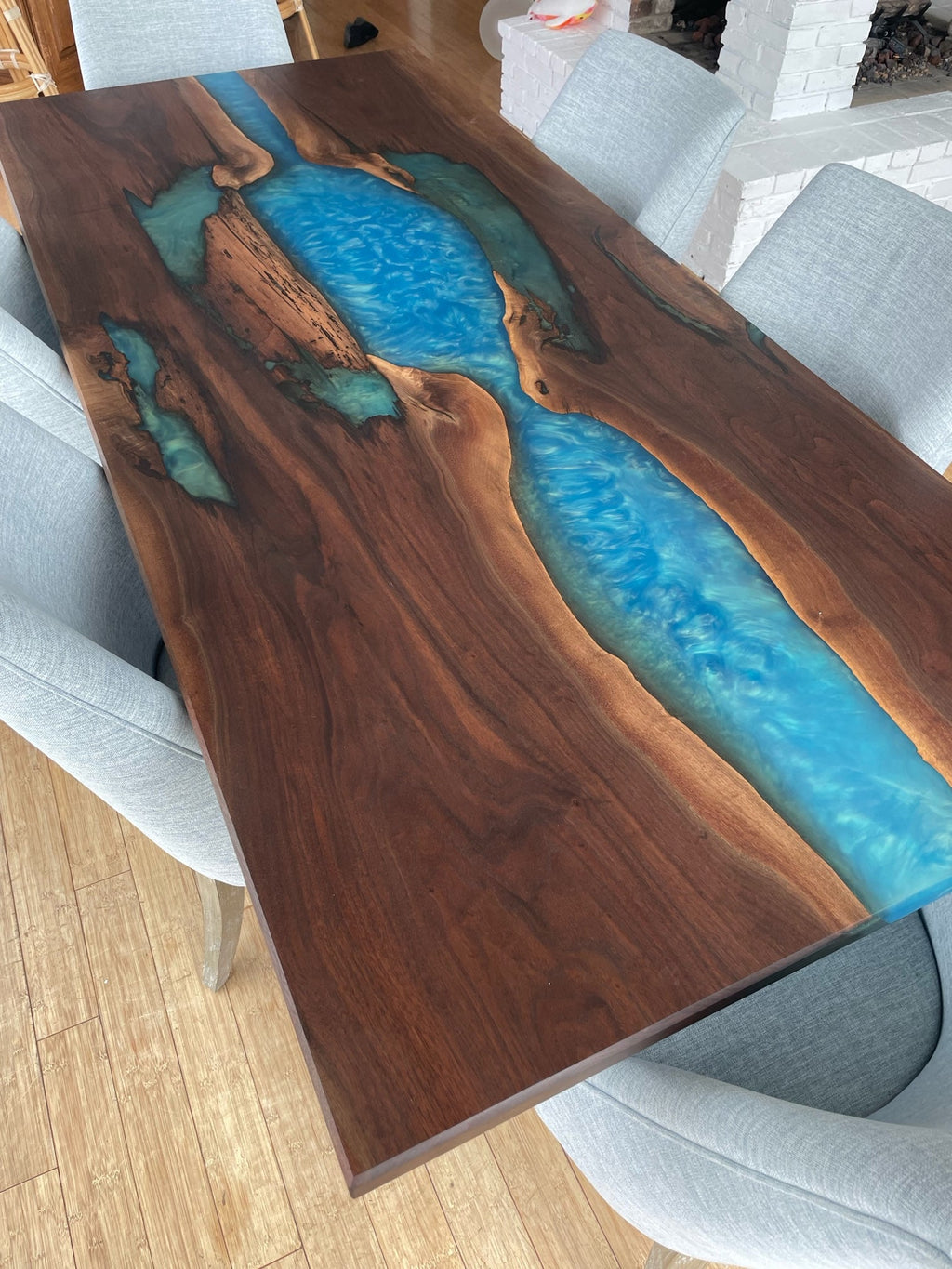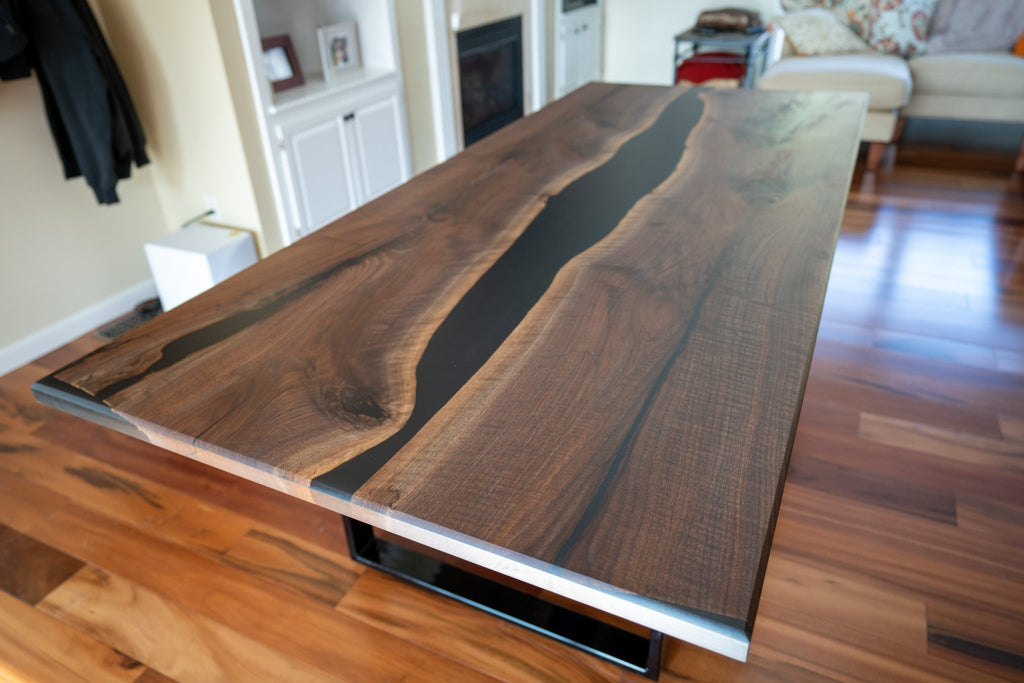
Care Instructions for Your Epoxy Resin Table
Share
Knowing how to care for your epoxy resin table is crucial to extending its life. With so many conflicting sources out there on what you should do to care for your epoxy resin table, we’ve put together a guide to help you know exactly what you should be doing and what to avoid doing.
This guide will talk about how to clean your table, what to avoid doing, what you should do, and how to repair it if minor damage occurs. So, keep reading to learn more about how to care for your epoxy resin table!
How to Take Care of Your Epoxy Resin Table
At Brick Mill Furniture, our epoxy resin tables are extremely durable and will last you a long time if you know how to take care of them.
Wipe Down the Epoxy Resin Table with a Soft Sponge
The first step to taking care of your epoxy resin table is to wipe down the surface using a wet towel. If you want to perform a more in-depth cleaning, use hot soapy water and a sponge to scrub away any build-up.
Avoid using any material that’s more abrasive than a sponge, such as scratchy steel pads. This is because while epoxy resin tables are scratch-resistant, they aren’t scratch-proof.
We finish our tables with a conversion varnish finish. This provides a smooth glossy finish, as well as a layer of protection.
Use Shade or Avoid Using Your Epoxy Resin Table Outdoors
You can opt to use your epoxy resin table outdoors, but you need to be extremely careful. When your table is outdoors, you need to use shade, such as umbrellas, to help keep as much sun off the table as you can.
A smart move is to keep your table indoors in a temperature and humidity-controlled environment. Of course, you can take your table outdoors but take the precautions above and bring it back in when you’re done.
This is very important because the UV rays can damage your table and noticeably change its colors. Because of this, you want to avoid exposing your table to too much sun.
Avoid Putting Hot Pots, Pans, or Dishes on the Epoxy Resin Table
To avoid damage to your epoxy resin table, always use a hot pad underneath hot dishes, pans, or pots that you want to place on the table. This is because the heat can cause damage to the epoxy (i.e., it can start to melt).


- Regular Price
- from $4,327.00
- Sale Price
- from $4,327.00
- Regular Price
-
$5,090.28 - Unit Price
- /per
Use the Epoxy Resin Table as Intended
We’re not saying that you have to only use your epoxy resin table as a dining room table – use it for homework or game night too! We’re saying that you need to be careful with how you interact with your epoxy resin table. Follow the instructions below to avoid any mechanical stresses on your epoxy resin table that can damage the integrity of the tabletop:
- Don’t drop heavy items on the table; this can result in dents or chips
- Don’t use a knife directly on the surface of the table; this can cause deep scratches
- Don’t move or place items with sharp metal edges to prevent scratches
Check Hardware and Resin Coating Regularly
You should regularly check your table's coating to ensure there aren’t any chips that can lead to water damage. The water damage can happen when you clean the table with wet sponges and towels or if it comes into contact with rain if kept outdoors.
Also think about how your table may be coated in waterproof resin, but the base may not be. The base could even be made from metal, which can rust over time. You also need to check the hardware of your epoxy resin table regularly because a loose bolt can result in damage and accidents. Always make sure that the hardware is secure and rust-free.
Use Acetone for Visible Marks
Cleaning your epoxy resin table and eliminating visible marks is part of regular maintenance and care for your table. When you notice a visible mark that can’t be felt - also called marring - caused by a heavier object being pulled along the tabletop, you can use acetone to remove that mark.
Always start with low concentration acetone because a little bit can go a long way. If you have a scratch on the table that can be felt, it is different from marring, and more repairs will be involved to ensure that your table is properly cared for.
How to Repair a Damaged Epoxy Resin Table

If you’ve noticed a deep scratch on the surface of your epoxy resin table, you want to take care of it before it causes even more damage. This section is going to give you a brief outline of what you should do to repair your epoxy resin table if you notice small chips or scratches:
- Thoroughly clean the epoxy resin table using a mild household cleaner and let it completely dry.
- Mix two-part epoxy resin until it’s completely blended.
- Use a small craft stick to fill in the scratch or chip as much as possible.
- Let it completely dry.
- Scrape off excess epoxy resin using a dull razor blade at an angle along the repaired scratch.
Once you’ve repaired your table, make sure that you’re following the care instructions and guidelines above to extend the life of your table
Final Thoughts
Caring for your crystal clear resin table is easy to do if you know the proper steps to follow. Hopefully this guide has helped you understand what needs to be done to extend its life and repair it if you need to. Remember to wipe down the table top regularly, use a polishing compound when you need extra shine, and keep your epoxy wood table out of prolonged sun exposure and it will continue to look its best.
FAQ
How Do You Clean an Epoxy Table?
Always start out using soap and water to wipe away most stains and spots on the table. You can also use gentle spray cleaners, such as a glass cleaner to get a shiny, streak-free, and spotlessly clean surface. If you notice that your table looks a bit dull, you can use mineral oil and buff it with a dry towel to make it shine again.
Can I Use a Clorox Wipe on My Epoxy Resin Table?
No, you should avoid using heavy chemicals on your tabletop to avoid damaging the epoxy. Also, avoid using any bleach on the table because bleach can stain the epoxy resin table.
Why Is My Epoxy Table Scratching?
Tabletop epoxy has been known to scratch easily and can also stain easily, similar to other materials like quartz. You may also find that some epoxy surfaces can become discolored over time. However, it also has a high corrosion resistance as long as you are careful and follow through with proper care and maintenance.
What if there are air bubbles in my epoxy resin?
A very light sanding can get rid of deeper air bubbles trapped in the epoxy. You can then wipe the table down with acetone.




